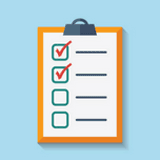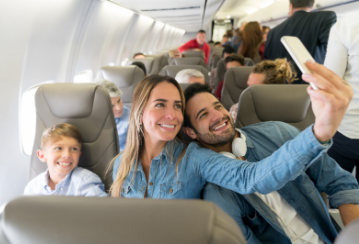News and Updates
5 social media safety tips for the holiday season
Posting photos and status updates on your social media accounts over the holidays can be a simple and fun way to stay connected with your loved ones. While we may enjoy sharing photos of our winter getaways, thoughtful gifts, or Boxing Day door-crashers, it’s important to remember that the content of these online posts could be dangerous in the wrong hands.
Many social media users are unaware that their online posts could actually be leaving valuable clues for thieves searching for their next target. A recent U.K. study found that 78% of ex-burglars admitted to monitoring social media to identify target properties.1 Social media users who are not careful about what they post, and who they share it with, could inadvertently be providing criminals with sensitive information such as where they live, what valuables are in their home, when they’re going to be out of town, and when they’re expected to return.
Fortunately, there are several social media safety tips that you can follow this holiday season that allow you to safely share your holiday updates with your loved ones – without putting yourself, your home and your belongings at risk.
1. Avoid geotagging your location.
Many social media apps – such as Instagram and Facebook – prompt users to add a location to their posts or to “check-in” to various destinations as they travel. If your social media profiles are public, then this information can act as a potential treasure map for burglars. Online prowlers can use public geolocation data, such as “check-ins” at the local grocery store, gym, library, etc., to pinpoint the general area of your home. Geotagging can become especially dangerous when your location check-ins suddenly move from your neighbourhood in Canada to a tropical beach resort – indicating to thieves that you’re out of town and your house is likely empty.
Be sure to check that all of your mobile devices, such as smartphones and tablets, have the geolocation feature deactivated. Even if you’re not manually checking-in to locations on your social networks, an enabled location services function could reveal similar information about where you’re posting from. Most electronic devices will allow you to activate your geolocation feature for GPS mapping purposes, while disabling the feature in other applications.
2. Never reveal your address.
While most social media users are savvy enough to refrain from posting their full street address on their online profiles, it’s not always that simple. Something as seemingly harmless as a photo of a freshly-rolled snowman in your front yard has the potential to reveal your home address to shrewd criminals who know what to look for. Avoid posting photos of your neighbourhood and of the exterior of your house. If you do decide to share a photo on your property, make sure that no identification markers such as street signs, house numbers, or unique decorations or architectural elements are present in the photo.
3. Wait until you’re home to post vacation photos.
Resisting the urge to share photos of yourself living it up on your winter getaway while your family and friends are stuck braving the Canadian cold can be difficult. Yet any photos of you enjoying the white sand and blue skies of a beachfront resort are a clear sign to burglars that your house is unattended. Try to save the vacation photo sharing until after you’ve returned home safely. If you really don’t want to wait, send the photos directly to the people you want to share them with rather than posting them online.
4. Refrain from showing off your valuables.
Did you receive a valuable holiday gift, or pick up something big during a Boxing Day door-crasher sale? It can be fun to show off our shiny new goods to our friends and family members, but sharing photos of your valuables online could make your home a potential break-in target for thieves. Just like you wouldn’t broadcast your bank account balance or investment portfolio on your social media platforms, it’s best to avoid sharing images of your most valuable items too.
5. Double check your privacy settings.
A social media best practice that you should follow throughout the year is to regularly comb through your friends and followers lists and delete, or limit the viewing settings, of any connections you don’t completely trust. A good rule of thumb when downsizing your social media connections is to remove anybody that you wouldn’t trust unsupervised in your home.
Several social media platforms also provide you with options to limit your posts’ exposure to different lists. For example, each time that you make a post on Facebook, you can select if you would like your post to be viewed by “Friends”, “Public”, “Me Only”, or “Custom”. The “Custom” function allows you to manually select the individual people you would like to view a given post – further limiting its exposure and risk.
Of course, the most effective way to keep yourself safe on social media this holiday season is to just unplug. Curl up by the fireplace, make yourself a big mug of hot chocolate, and take a break from social media altogether.
If you have any questions about your existing home coverage, or want to know more about recommended coverage for the holiday season, contact your OTIP insurance broker at 1-800-267-6847.
1. The Independent





